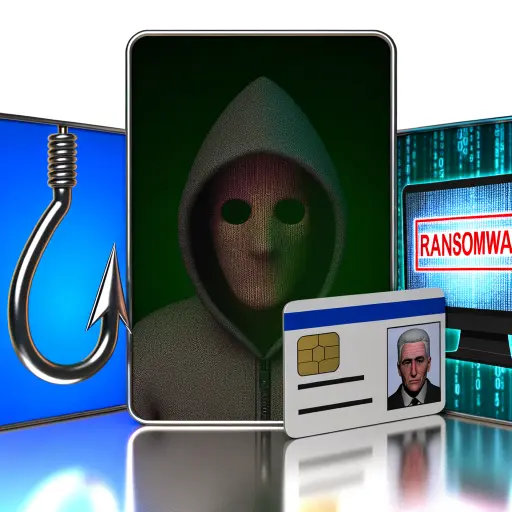
“Protect your digital life: Stay vigilant against phishing, identity theft, and ransomware.”
Understanding Phishing, Identity Theft, and Ransomware: How to Protect Yourself from Cyber Crimes

In today’s digital age, cyber crimes have become increasingly common and sophisticated. Phishing, identity theft, and ransomware are some of the most prevalent forms of cyber attacks that can have severe financial and psychological impacts on victims. Understanding these threats and how to protect yourself is crucial in staying safe online.
Phishing is a type of cyber attack where criminals use fraudulent emails or websites to trick individuals into providing sensitive information such as passwords, credit card numbers, or social security numbers. These emails often appear to be from legitimate sources, such as banks or government agencies, and can be very convincing. Once the attacker has this information, they can use it to access the victim’s accounts, steal their identity, or commit other forms of fraud.
Identity theft is another common cyber crime that occurs when someone steals your personal information and uses it to commit fraud or other illegal activities. This can include opening new credit accounts in your name, filing false tax returns, or even using your identity to commit crimes. The impact of identity theft can be devastating, with victims often spending years trying to repair their credit and reputation.
Ransomware is a type of malware that encrypts a victim’s files and demands payment in exchange for the decryption key. This type of attack can be particularly damaging for businesses, as it can result in the loss of critical data and disrupt operations. In some cases, victims may feel they have no choice but to pay the ransom, but there is no guarantee that the attackers will actually provide the decryption key.
So how can you protect yourself from these types of cyber crimes?
The first step is to be aware of the risks and to stay informed about the latest threats. Be cautious when opening emails or clicking on links from unknown sources, and never provide personal information unless you are certain the request is legitimate.
It’s also important to use strong, unique passwords for all of your accounts and to enable two-factor authentication whenever possible.
Another key step in protecting yourself is to keep your software and devices up to date with the latest security patches. Cyber criminals often exploit vulnerabilities in outdated software to gain access to systems, so it’s important to install updates as soon as they become available.
Finally, it’s important to have a plan in place in case you do fall victim to a cyber attack. This includes regularly backing up your data, monitoring your credit reports for any suspicious activity, and knowing who to contact if you suspect you’ve been targeted.
Remember, staying safe online is an ongoing process, but with the right precautions, you can protect yourself and your personal information from harm.














